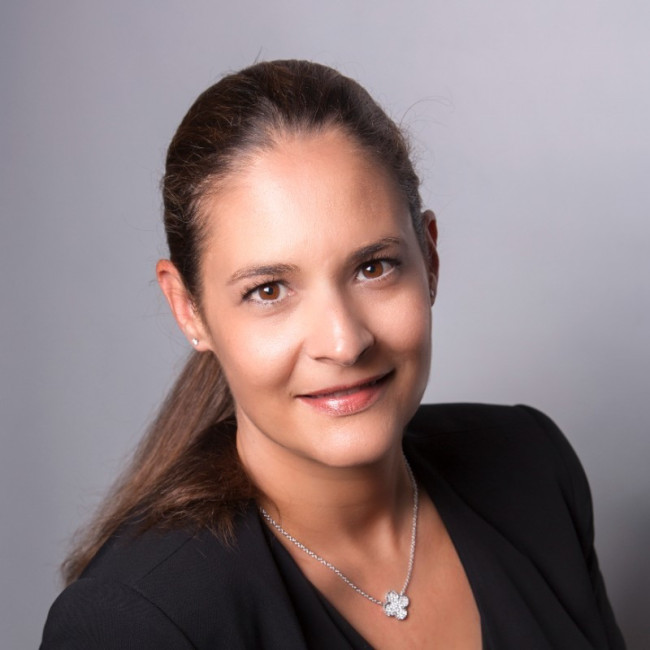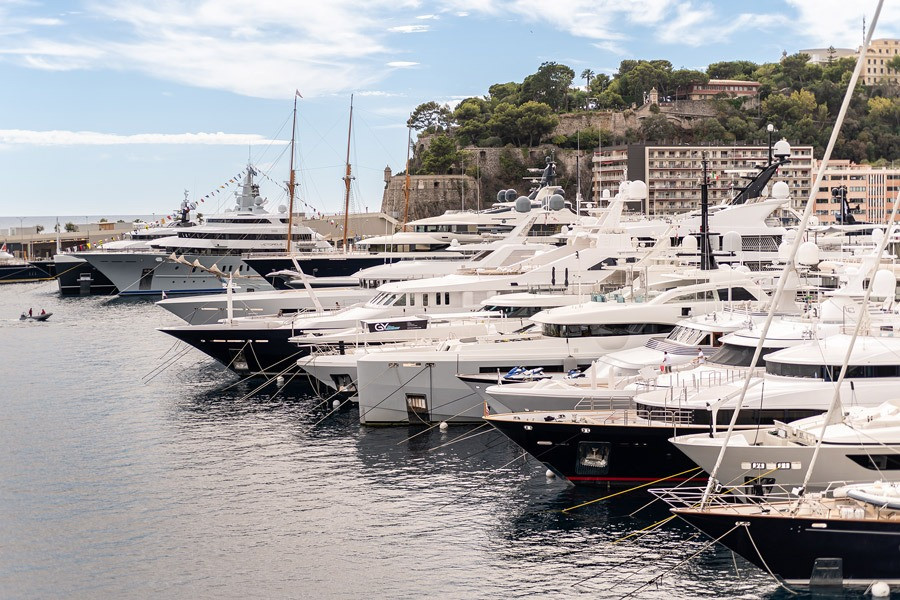Monaco Yacht Show: "95% of superyacht shipyards participate in the Monaco Yacht Show"
For its Managing Director, Gaëlle Tallarida, the Monaco Yacht Show, created in 1991, is "a unique opportunity in the world to see everything that's new in the yachting sector in the space of four days, in particular the 40 to 50 boats launched as world premières.”
What is the genesis of the Monaco Yacht Show?
At the start, in 1991, the idea was to create a meeting for brokerage and the sale of boats because it was already an ultra-represented sector in the region and very established in Monaco. Then, when the organising company stopped its Nice show dedicated to equipment manufacturers and shipyards, the Monaco Yacht Show (MYS) took over this sector in 2000. Since then, the show has grown gradually, from 60 to 600 exhibitors just before the Covid pandemic.
Is the boat building industry strongly represented?
The Dutch shipyards, which are the market leaders, were the first to come to Monaco. Currently, probably 95% of superyacht shipyards (24 metres and over) take part in the MYS thanks to the breakwater's ability to accommodate boats up to 125 metres! Larger yachts - or ones that the owners do not wish to show in port - stay offshore…
You are now hosting nearly 530 exhibitors, including all sectors of luxury and superyachting such as shipbuilding, refit, service companies and brokers. Do you know how many transactions take place during the show?
Sadly not – that is mission impossible. A boat sale is rarely concluded in a few hours during the four days of the MYS. The financial stakes are such that the sale is revealed when everything is over, which is the main reason for the lack of numbers; but we have information confirming to us that boats are selling well thanks to the show, without knowing the location of the transaction. For me the best data, which confirms the value of the event and its unique place in the world market, is the renewal rate of exhibitors which exceeds 85%! They don't come back to the MYS for our benefit [she smiles].
Coming to the MYS is a unique opportunity in the world to see all that's new in the yachting sector in the space of four days - in particular the 40 to 50 boats which are launched as world premières – and this is the event's main strength. Over time, we have succeeded in highlighting the exhibitors at the show, by giving the spaces themes: where to find the new yachts, accessories, interior decoration, technical products for the construction of a boat, etc, and to offer a seamless visitor experience.
Has the number of visitors dropped?
The show was a victim of its own success. We went up to 33,000 visitors! However, it was important for exhibitors to welcome their private clients in more comfortable conditions. That's why our post-Covid strategy focused on optimising everything we'd been doing for years and going one step further: we voluntarily decided to go down to 25,000 visitors; offer more complete packages for a pre-selected clientèle; and create one day when the port area is only accessible to the 10,000 private customers and exhibitors. The industry wanted less B2B, more B2C. It’s about connecting exhibitors with the right visitors.
How do you select these "right” visitors?
The objective is to help our exhibitors find buyers, to do the groundwork for them by introducing them to potential customers. A MYS employee deals exclusively with these clients, sees with them what they are looking for, what type of boat interests them, etc, and then helps them to organise their complete visit to the show - from making appointments to visit their preferred boats, to onboard private cocktails organised by the brokers. We are true intermediaries but we are neutral. At no point does the MYS receive a commission on a sale. Our strength is to have created this marketplace. If we played a commercial role, we would compromise the ethics of being an event organiser. This is our business model.
How do you approach clients?
We seek out our final clients wherever they may be, during the course of many trips abroad: the client breeding grounds are the American and British markets. We know the meeting places where businessmen do high-quality networking. We collaborate with major hotels, such as the St Regis in New York. We are one of the must-attend events for the very wealthy, according to Forbes magazine.
Do people come for the networking?
Attending the MYS means meeting your peers in a country that is safe, attractive, with many business and networking opportunities (cocktails, parties and so on). You have billionaires talking to billionaires. This is part of my sales pitch and it really hits home. Also, there are people who have come to the MYS with no boat but left with one [she smiles]. I even know of one client who bought a shipyard outright just to build his dream boat!
Do the world premières create a buzz? Is this an attraction factor?
Yes, of course, these premières boost the reputation of the show in terms of the media but what matters is the intrinsic value of the event. It is this that brings in the right customers interested in acquiring a yacht and attracts exhibitors looking for good customers. It's a virtuous circle.
The MYS shows some 100 yachts up to more than 100 metres. What is the profile of buyers?
Overall, boat owners are mostly businessmen, at the head of very large companies - very few are women. The age range has widened. When I started in the business, the average yacht owner was between 50 and 70 years old. Today, of course we do still have these profiles but there are more and more owners aged 35-40. I think this is due in particular to the development of new companies linked to digital. In the digital world, entrepreneurs develop colossal fortunes quickly.
Are today's buyers more interested in motoryachts or in more eco-friendly sailing yachts?
This is a brand new trend. Admittedly, it does not concern 100% of buyers but these new requests concern both motoryachts and sailing yachts (which represent 15% of the sector). For the past two or three years, there has been growing interest in catamarans and a very strong demand for boats built in a more virtuous way, with hybrid engines. The yachting industry had to follow suit and embarked on research and development, which was not really an option, more an obligation. At the MYS, we shine a light on these sustainable technologies aimed at reducing the environmental impact of superyachts. We have created a space, the Sustainability Hub, where exhibitors are selected in partnership with the Water Revolution Foundation, according to strict specifications - there is no question of greenwashing.
What "green" novelties will be presented this year?
Around 20 companies will be in this pavilion, presenting a range of technologies that already exist on the market. This year, for example, there will be Fabiani Yacht's Hybrid MY 77' (under construction), which incorporates an innovative, recently-patented, sustainable solution: retractable solar panels that store energy in batteries; as well as ecological and biodegradable cleaning products for yachts, Eazy Green, made from raw vegetable materials without dyes, preservatives, EDTA or phosphate.
What are the other trends in the superyacht sector?
Toys and accessories! This according to the age of the owners. We have brought together these sorts of facilities, activities and services in the Adventure Area: sports tenders for day trips, luxury and all-terrain vehicles, water toys, high-tech gadgets, helicopters or excursion programmes to the most exotic and isolated destinations on the planet. A yacht allows you to go sailing but also to set off on an adventure, to having thrilling experiences – and we are exhibiting some 50 very innovative, increasingly-electric tenders.
After the Formula 1 Grand Prix, the MYS is the Principality's second-biggest event in terms of economic revenue. What are the figures? How much does it cost to organise each year? How much does it bring in, including VAT?
I have no official figures. All I know is that hotels and restaurants are full during the show, boutiques are bombarded. Hairdressers, florists, etc, all also work hard during the MYS. In the Carré d'Or, in luxury goods boutiques during the week of the MYS (as with Grand Prix week), no-one takes time off and that is not a coincidence! The show is a tremendous economic - as well as publicity - coup.


